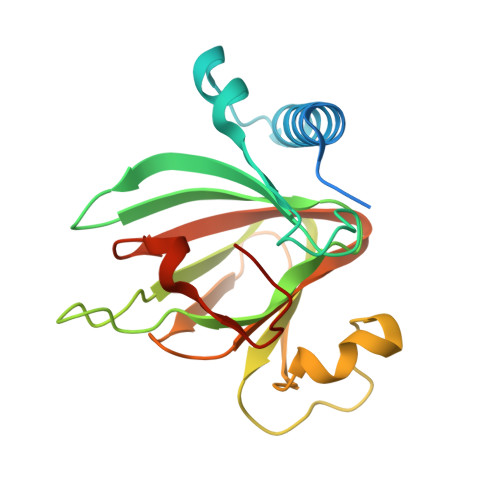Biochemical and Structural Characterisation of a Novel D-Lyxose Isomerase From the Hyperthermophilic Archaeon Thermofilum sp.
De Rose, S.A., Kuprat, T., Isupov, M.N., Reinhardt, A., Schonheit, P., Littlechild, J.A.(2021) Front Bioeng Biotechnol 9: 711487-711487
- PubMed: 34422783
- DOI: https://doi.org/10.3389/fbioe.2021.711487
- Primary Citation of Related Structures:
7NZO, 7NZP, 7NZQ - PubMed Abstract:
A novel D-lyxose isomerase has been identified within the genome of a hyperthermophilic archaeon belonging to the Thermofilum species. The enzyme has been cloned and over-expressed in Escherichia coli and biochemically characterised. This enzyme differs from other enzymes of this class in that it is highly specific for the substrate D-lyxose, showing less than 2% activity towards mannose and other substrates reported for lyxose isomerases. This is the most thermoactive and thermostable lyxose isomerase reported to date, showing activity above 95°C and retaining 60% of its activity after 60 min incubation at 80°C. This lyxose isomerase is stable in the presence of 50% (v/v) of solvents ethanol, methanol, acetonitrile and DMSO. The crystal structure of the enzyme has been resolved to 1.4-1.7 A. resolution in the ligand-free form and in complexes with both of the slowly reacting sugar substrates mannose and fructose. This thermophilic lyxose isomerase is stabilised by a disulfide bond between the two monomers of the dimeric enzyme and increased hydrophobicity at the dimer interface. These overall properties of high substrate specificity, thermostability and solvent tolerance make this lyxose isomerase enzyme a good candidate for potential industrial applications.
- The Henry Wellcome Building for Biocatalysis, Biosciences, College of Life and Environmental Sciences, University of Exeter, Exeter, United Kingdom.
Organizational Affiliation:


















